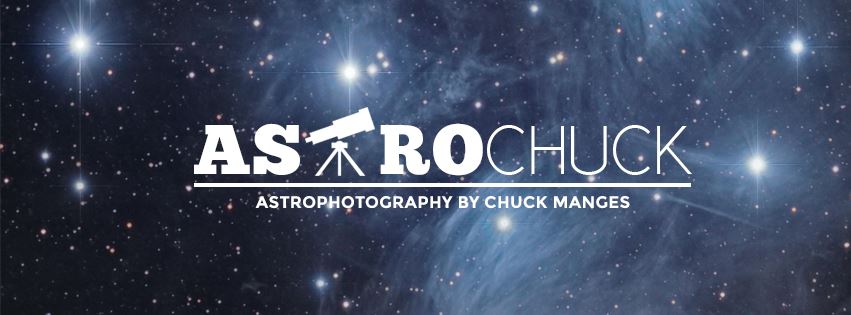I decided I wanted to make the best of my limited imaging times, so I looked for ways to decrease exposure times. The Hyperstar F/2 conversion for my 11" Edge really helped as I "blogged" in my previous posts. Taking it even further, I thought a One-Shot Color (OSC) CCD camera might help. I've shot DSOs for the past 3 years using a Mono CCD , before that with a Canon DSLR. With the Mono CCD, I would have to shoot each color individually through RGB (Red, Green and Blue) filters. Also a Luminance (L) filter is used. The Mono camera was a great step up from my imaging days with a DSLR, as I had limited success with my Canon DSLR's. Maybe it was just my inexperience at the time, but I had always feared that a OSC camera would be too much like a DSLR,
I was graciously given the opportunity to test a QHY10 OSC camera recently....
I waited a month after receiving the camera for the skies to clear. Meanwhile the proper adapters were ordered and installed to use the QHY10 with my 11" EdgeHD/ Hyperstar setup. Wednesday night it finally cleared enough to image. The first "test" object I tried was NGC7023, the Iris Nebula. I've shot this object many times before, so it would be a good benchmark.
This was 15x 2 minute stacked images and only 10 dark frames were used for calibration. For only 30 minutes worth of images, I was really impressed how much of the "dusty" stuff was visible.
I should also add that my "seeing" or sky conditions were not the best on this night. For those of you familiar with a SQM (Sky Quality Meter) , I usually read in the high 20's to 21.5. On this night the best I saw was 19.7.
From the Iris I moved to IC5146 the Cocoon Nebula. I have also shot this previously....another good test. Also using the Hyperstar, this time with 20x 2 minute and 6x 5 minute frames. (70 minutes total)
While I was imaging the Cocoon, I also had my Mono CCD, a QHY23M imaging through the guidescope (AtroTech AT65EDQ.) I used an Off-Axis Guider on the AT65EDQ while it imaged. I captured 8 x 10 minute frames of the Cocoon through a Luminance filter. I then added this Luminance to the RGB of the QHY10 image. The FOV (Field of View) differs between the cameras and 2 telescopes, so this image uses the FOV of the QHY23M and AT65EDQ, It is also slightly cropped, because I don't have the 2 telescope/cameras oriented perfectly yet.
80 minutes total imaging time in these 2 images

QHY10 OSC mounted to Hyperstar(top of image)
QHY23 mounted to AT65EDQ(bottom of image)
My next "test" was to use the QHY10 on the AT65EDQ. This configuration gives me a 3.1 x 2.1 degree FOV, something I could only accomplish before using multiple images and creating mosaics. I was just in time to image M31, the Andromeda Galaxy as it rose above my pesky backyard trees. Since the 65mm Astro-Tech has a focal ratio of 6.5 , I would have to spend longer on each sub-exposure when compared to the F/2 of the Hyperstar. I shot 7x 10 minute subs to create this image
When I moved the QHY10 to the AT65EDQ, I put the mono QHY23 on the Hyperstar. Through the Luminance filter, I captured 15 x 3 minute images. I again used this Luminance image with the RGB of the QHY10, to create the next image. It is using the FOV of the QHY23M and is not cropped this time,
70 minutes total spent imaging M31....
In total I had 3 hours worth of good images in 71 subframes , through less than perfect skies. The QHY10 OSC passed my "first light" tests with flying colors.....no pun intended
Thanks for stopping by!





